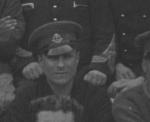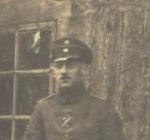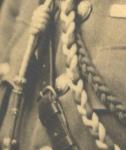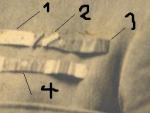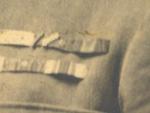
Rittmeister
For Deletion-
Posts
92 -
Joined
-
Last visited
Content Type
Profiles
Forums
Blogs
Gallery
Events
Store
Everything posted by Rittmeister
-
Since the subject comes up so many times in so many different places I decided it might be interesting if I did some research of my own. So I searched and found the dossiers of the Belgian military tribunal that was tasked with researching the cases. They did their best in assembling material (mostly the sworn statements of eye-witnesses) but most cases remained unsolved and classified. The curious habit seems to have been on immediatly charge the local commander for the crimes troops under his command supposedly committed; innumerable are the charges of volontary manslaughter (homocide volontaire) against General von Boehm for instance. However, one case drew my attention as it seemed to offer some more depth and at least gave a name of the supposed perpetrator; a certain "Karl von Kohlenberg". The city of Aalst/Aloste in the Belgian province of East-Flandern was inhabited predominatly by the working-class, the province being the first to start up the industrial revolution in Flanders after 1830. The Germans arrived at the gates of the city late september 1914 and started shelling the city. With the city in flames, German troops from the Landwehr-Infanterie-Regiment 73 (Hannover) poured in and some of them then seemed to have unleashed fury on the inhabitans, who had mostly resorted to hiding in cellars. Basically, the charges against German troops would be three-fold; plundering, setting fire to houses and murder. According to some eye witnesses, anybody who came out of hiding (mostly to check up on their house during a pause in the shelling) were stabbed or shot to death immediatly. The instigator of the crimes was by several people identified as Oberleutnant Karl von Kohlenberg, whom they described as having led the operations while qui se conduisait en v?ritable forcene - he behaved furious, him being groot and struisch; big and strong. I count at least 25 charged of volontary manslaughter brought against him, all of these happened before the 27th of september 1914. The city fell on 28th september 1914. Kohlenberg was supposed to be company commander of 8.Kompanie of above regiment. Whilst not personally involved in any of the crimes (the stabbing and shooting of mostly male inhabitans) he is at least identified by one person as having given the orders to do so. Kohlenberg didn't survive; the died on the 27th when a burning chimney came down crashing from a roof on top of him. He was buried in Aalst and many of the people who lost a relative walked past the grave each day for the duration of the occupation. Eventually the Belgian military tribunal halted all prosecution on 17.12.1924 because the main suspect was dead. His real name was actually Karl Kohlenberg, the "von" seems to have been a collective illusion after the war. So my question is, can anybody provide any more details on this person? I know next to nothing on him. He is buried at Vladslo. I also vaguely remember a post by forum member Ulsterman who, on a topic with the same subject, referred to IR 73 as being a source of much problems. Could it be the same regiment? It would seem that the German war crimes were the result of a small number of bad apples.
-
Imperial Russia Russian immigration to Belgium during the twenties
Rittmeister replied to Rittmeister's topic in Russia: Imperial
Yes, I know that book, but I wondered if there exists something that is the equivalent of the German Rangliste for Russian Imperial officers? It seems like all of the immigrants served during the Great War. -
The end of the Russian civil war in favour of the bolsheviks saw a mass-exodus of Russians, I presume most of them to be soldiers of the defeated White armies. I don't know if Belgium was a popular destination for Russian immigrants in this period. Most of them settled in Brussels. I assume that individual soldiers will have left no traces in Russian archives or literature, so researching them will be pointless? I noticed that a disproportionate of them were officers, which would also explain how they managed to immigrate and rebuild their existance. Farmers or handworkers would usually not have the necessary funds for such a journey, even if they felt the need to emigrate. So I focus here on officers only and wonder if anybody has more information regarding their respective war service? I mention here some of them; Michel Hovansky-Krasnoff, born 02.03.1898 in Petrograd. Naval officer, took part in the Great War 1914-1918. Th?odore Essen, born 19.09.1887 in Abdoulino. Captain in the Russian Imperial army, 1914-1918.
-
Thanks Glenn- I believe that the second Nobach must be the one that I am looking for. He was 28 years old when commissioned, that is indeed rather old. He went to a Kadettenanstalt. Are these the only two Nobachs to be found? Since the searched Nobach was not a professional soldier I think the second one Glenn found must be the right one.
-
Belgium Belgian ribbon bar ID from WWI
Rittmeister replied to Rittmeister's topic in Northern European & Baltic States
Back to the drawing board it is for me- tried identifying this man by his awards but there are too many in his regiment with the combination we identified. Hence my last ditch effort; is it possible that we missed an Ordre de Lepold (avec palme)? The first, white medal on the top bar seems to show two medals. It's also bothering me that there are two palms? But on the same award? I attached a better scan, hopefully it reveals something positive. -
Belgium Belgian ribbon bar ID from WWI
Rittmeister replied to Rittmeister's topic in Northern European & Baltic States
Hi Roel, Sorry for the late thank you and reply to your post! Okay, I now can make out that Belgian medal bars have their own logics. Translating the award names into their French names, I thus get this sum of (5) awards for this man; - Ordre de la Couronne (or: Ordre de Leopold) - Croix de guerre (avec 2 Palmes et Lion?) - Yser-Medaille - Medaille Commemorative de la guerre - Medaille de la victoire Last but not last there's the attached photo showing the man's two aiguilletes. One will surely be the Vuurkoord of his unit (which one?), which of course raises the question what the other one is for? -
Belgium Belgian ribbon bar ID from WWI
Rittmeister replied to Rittmeister's topic in Northern European & Baltic States
Thanks a lot for all the quick help! I'm, however, a bit confused. Let's start with the awards that are surely to be seen; - Ysermedaille - Oorlogsherinneringsmedaille 1914-1918 - Overwinningsmedaille 1914-1918 So, these are sure. However, I seem to count many more medals on the bar. Am I mistaken when I count like the German system? Were Belgian ribbons wider than German ones, giving the impression to my untrained eye that there are at least 5 on each row? I've attached an image with some numbers so that I can learn how to identify the awards properly in the future; 1) Not yet identified? 2) Oorlogskruis met twee palmen and a lion? What was the importance, if any, of a lion here? 3) Ysermedaille 4) Not yet identified? It has a crown? According to love4history, the last bar on the second row was an interallied victory cross, I can't seem to find that one on this site, however. So that leaves, to my untrained eye, many more awards to be identified, no? I seem to count 6 awards on the lower row alone? Thanks for all the help and the patience with a newbie! -
Belgium Belgian ribbon bar ID from WWI
Rittmeister posted a topic in Northern European & Baltic States
Can somebody recognize the awards? I can recognize two palms and one crown on the ribbon bar. The other ones I don't know. I assume it would be something like Oorlogskruis met Palmen and Kroonorde? -
An officer, but from which regiment? The unusual thing seems to be the button on the Krage, could it mean they are from a Sachsen regiment? Also the uniform combination is unusual, a white Waffenrock and black trousers? They are horseriding trousers clearly, but part of the uniform or just for training?
-
I am impressed! Indeed, he is wearing Feldgrau and the photo was indeed taken at the earliest in 1916. Of course, there are two pips! As you can see I'm a newbie to this and easily thrown off guard. I didn't even see the "A", is it just below the crown? I guess it would stand for Emperor Alexander, which the regiment carried in it's name, and the roman numeral "III" for the regimental number. The numeral however seems strangely crafted, the first digit almost looks like a 3. Is there a reference somewhere, where the numerals are better depicted? Regarding the double piping of the Epauletten, according the site I quoted they had "Gilt on white with gilt cypher". Indeed I can also make out the darker piping, seemishly red. According to the (digital) textbook, it shouldn't be there? Thanks again for your help, I've learned a lot.


